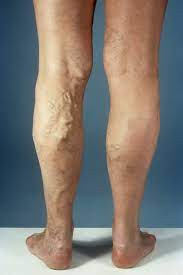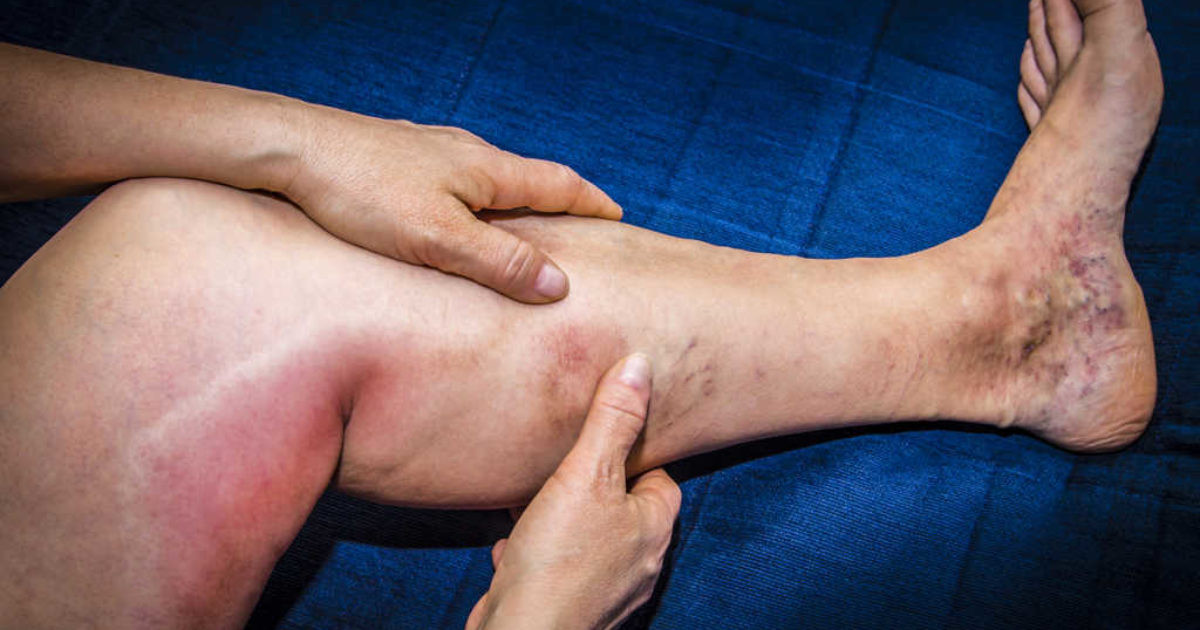Definition
Arteries transport blood from the heart to the rest of the body, while veins return blood to the heart. Veins contain valves that prevent blood from flowing backward. This condition is known as venous insufficiency, when veins struggle to send blood from other tissues back to the heart. In this disease, blood does not flow properly to the heart, causing it to pool in the leg veins.
Several factors can cause venous insufficiency, most commonly deep vein thrombosis and varicose veins. If you have a family history of venous insufficiency, there are simple steps to reduce your risk of developing the condition. Venous insufficiency is common, with approximately 150,000 new cases diagnosed annually. This disease is also associated with reduced quality of life and work productivity. Without treatment, chronic venous insufficiency will worsen, leading to venous ulcers and post-thrombotic syndrome.
Causes
Blood clots or varicose veins most often cause venous insufficiency. In healthy veins, blood flows from the limbs back to the heart, aided by valves that prevent backward flow. When clots obstruct blood flow, blood accumulates below the blockage, causing venous insufficiency.
In varicose veins, the valves are damaged, leading to leakage and backward blood flow. In some cases, weak leg muscles can also contribute to venous insufficiency, as they cannot adequately push blood forward.
Venous insufficiency is more common in women than men and is more likely to occur in adults over 50 years old.
Risk factor
Risk factors for venous insufficiency include:
- Blood clots
- Varicose veins
- Obesity
- Pregnancy
- Smoking
- Cancer
- Weak leg muscles or leg injuries
- Superficial vein swelling or phlebitis
- Family history of venous insufficiency
- Prolonged sitting or standing without movement
Symptoms
Symptoms of venous insufficiency include:
- Swelling in the legs or ankles
- Pain that worsens with standing and improves when the legs are elevated
- Leg cramps
- Aching, throbbing, or heaviness in the legs
- Itchy legs
- Leg weakness
- Thickened skin on the legs or ankles
- Skin discoloration, especially around the ankles
- Leg ulcers
- Visible varicose veins
- Tightness in the calves
Diagnosis
A doctor will conduct a physical examination to diagnose venous insufficiency and inquire about symptoms and medical history. They may also recommend imaging tests, such as venograms and duplex ultrasound, to determine the cause of venous insufficiency.
- Venogram: This procedure involves injecting a contrast dye into the veins and taking X-ray images to visualize the veins more clearly.
- Duplex Ultrasound: This procedure uses sound waves to assess blood flow speed and direction in the veins, and the results are displayed on a screen.
Management
Treatment depends on various factors, including the patient's condition and medical history. Common treatments include:
- Compression Stockings: These elastic stockings apply pressure to the lower legs, improving blood flow and reducing swelling. The compression level and stocking length are prescribed based on the patient's condition.
- Improving Blood Flow:
- Elevate the legs above heart level when possible
- Wear compression stockings
- Avoid crossing your legs while sitting
- Exercise regularly
- Medications:
- Diuretics to remove excess fluid
- Anticoagulants or blood thinners
- Pentoxifylline improves blood flow by reducing blood viscosity
- Surgery: For severe cases, surgical options may include:
- Repairing or removing damaged veins
- Endoscopic vein surgery
- Vein bypass surgery
- Laser surgery to close damaged veins
- Phlebectomy: An outpatient procedure to remove smaller varicose veins through small punctures.
- Sclerotherapy: Involves injecting a chemical into damaged veins, causing them to scar and close.
- Catheter Procedures: For severe cases, a catheter is inserted into the vein, heated, and removed, causing the vein to close.
Complications
Complications from venous insufficiency include:
- Deep vein thrombosis (DVT)
- Pulmonary embolism
- Venous ulcers
- Secondary lymphedema
- Skin discoloration
- Thrombophlebitis
- Chronic pain
- Recurrent cellulitis infections
Prevention
To reduce the risk of venous insufficiency, especially with a family history of the condition, adopt healthy lifestyle changes:
- Avoid prolonged sitting or standing
- Refrain from wearing high heels
- Do not smoke
- Exercise regularly
- Maintain a healthy weight
When to see a doctor?
Consult a doctor if you experience symptoms of venous insufficiency. Prompt and accurate diagnosis and treatment can prevent the condition from worsening and causing complications.
Looking for more information about other diseases? Click here!
- dr Hanifa Rahma
Healthline editorial team. (2018). Venous insufficiency. Retrieved 12 April 2022, from https://www.healthline.com/health/venous-insufficiency
Weiss, R. (2020). Venous insufficiency. Retrieved 12 April 2022, from https://emedicine.medscape.com/article/1085412-overview
Dumain, T. (2020). What is chronic venous insufficiency?. Retrieved 12 April 2022, from https://www.webmd.com/dvt/dvt-venous-insufficiency
Eske, J. (2018). Chronic venous insufficiency: what to know. Retrieved 12 April 2022, from https://www.medicalnewstoday.com/articles/323979
Chronic venous insufficiency (CVI). (2019). Retrieved 12 April 2022, from https://my.clevelandclinic.org/health/diseases/16872-chronic-venous-insufficiency-cvi
Patel, SK., Surowiec, SM. (2020). Venous insufficiency. Retrieved 12 April 2022, from https://www.ncbi.nlm.nih.gov/books/NBK430975/












